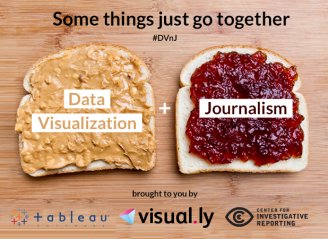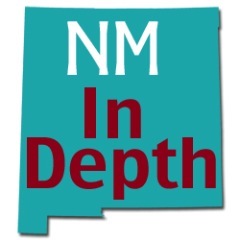 Data-driven journalism is quickly becoming another important skill set in the reporter’s toolbox, a unique form of storytelling in today’s digital media environment and a way for public data to reach people that shows real impact.
Data-driven journalism is quickly becoming another important skill set in the reporter’s toolbox, a unique form of storytelling in today’s digital media environment and a way for public data to reach people that shows real impact.
News organizations such as The New York Times, and INN members Texas Tribune and ProPublica are some of the exemplars that are charting the path of how data journalism can have an impact on the communities they serve.
Nonprofit news organizations have a perfect opportunity to help contribute to charting this path toward the data-driven journalism effort all while helping their communities be informed on the important issues that impact their daily lives.
This week, we focus on INN members VTDigger.org and New Mexico In-Depth and their innovative approaches to covering their state using data-driven journalism techniques that are making a big impact one data point at a time.
VTDigger.org’s Campaign Finance Database: Follow the Money
![]() For Anne Galloway, founder of VTDigger.org, her data project has been a labor of love. Over several months and through a combined team effort of her staff, interns, and a consultant, they have built a special database called the “Campaign Finance Database: Follow the Money” for Vermont citizens. It will launch soon.
For Anne Galloway, founder of VTDigger.org, her data project has been a labor of love. Over several months and through a combined team effort of her staff, interns, and a consultant, they have built a special database called the “Campaign Finance Database: Follow the Money” for Vermont citizens. It will launch soon.
The campaign finance database will allow readers to search by candidate and contributor. It’s the first database of its kind in the state for the public. The project is funded by the Ethics and Excellence in Journalism Foundation. The database is currently in its final stages and will officially launch in mid-October/early November.
Galloway is currently trying to raise match funding for the project. She is planning to launch a donor event Kickstarter project to expand the database for a second phase of the project in the coming year.
New Mexico In-Depth: Financial Disclosure Forms
For Trip Jennings, executive director of New Mexico In-Depth, his data project was taking the inaccessible making it accessible for the citizens in New Mexico.

This summer, his reporter, Bryant Furlow, went to New Mexico’s Secretary of State looking for information and noticed that the state had not posted the year’s financial disclosure forms for public officials. Furlow decided to move forward and seek out those forms and make them available to the public. The project launched in August and you can view all the forms here.
This project is the first of its kind in New Mexico to make these kinds of public documents available online for the citizens of New Mexico. Jennings is currently expanding on this project by looking into other state government agencies and their public data for future news stories.
The Secret Sauce to Launching a Data Project
So what is the secret sauce that helped VTDigger and New Mexico In-Depth pioneer these projects? For Galloway and Jennings, embarking on this kind of data project included several success factors: a labor of love, pure journalistic curiosity and the goal to serve the public with important information about those in power who are representing the citizens of their state.
They are the only news organizations in their respective states to have this kind of data available to the public from their site. Some may ask - why didn’t other news organizations embark on this kind of project already?
In an interview with Galloway and Jennings, they both identified that this kind of data project is time and resource-intensive, which may not necessarily fit within the limits of a large, daily news organization that has hourly deadlines and tight resources.
However, nonprofit news organizations often are smaller in staff size and may have fewer resources than a larger news organization. So how can this kind of work be done?
Well, the discerning factor for these INN member organizations is having the time initiative and passion to do this kind of work – the secret sauce to making this possible - even it if takes months, a year or longer to complete the project as both Jennings and Galloway discovered with their own state data projects.
Jennings states that nonprofit news organizations have a big role to play in the area of making data public and accessible to all. News organizations are no longer in the business of providing news but also serving in the information and data business according to Jennings.
Jennings sees their news organization’s role as not just serving the public but other constituents in the community.
Since his team launched the disclosure forms on the site in August, they have had reporters come to their site wanting to do stories based off the data in the forms.
According to Galloway, making these kinds of data projects accessible to the public is not only necessary but it is attractive to the audiences they serve who crave information about the actions of their government officials.
Galloway has noticed with other data projects they have launched on their site that the data becomes a web-traffic generator and that the public is hungry to see the government memos, forms, documents, etc. According to Galloway, the public wants to see the official documentation for themselves.
See VTDigger's "Hot Docs": http://vtdigger.org/tipster/hot-docs/
Where to Start
As VTDigger and New Mexico In-Depth demonstrate, doing a data-driven journalism project is possible and can be done simply. For nonprofit news organizations seeking to implement similar data initiatives, Galloway and Jennings have several recommendations:
- Make a plan. Have a plan of what kind of data project you want to do. Write a business plan for it. Make sure it is unique and that no one else is covering that particular topic.
- Seek Funding. You will need to have money to help start and keep the data project going – in terms of staffing, technology needs, maintenance for the data project, etc. Identify how much money you will need to get the project off the ground. Then identify potential funders. Consider getting matching grants to help once the data project goes live.
- Test the plan. Talk with people in your community and state to find out if they would be interested in this kind of data news story. By doing this, you will find out what people are interested in, how the information could be presented to the public most effectively, and it can create momentum behind the story, so when it launches you have an audience anxious to see it.
- Seek hires to help with the data. Hire people that can help with you with the data mining, scrubbing and data visualization. Don’t try to do this on your own. Hire consultants and/or bring in interns to help.
Tools to Get Started
There are many tools that can be used for data projects today. Both Galloway and Jennings have used Document Cloud (https://www.documentcloud.org/home) for hosting and publishing documents on their site and that is a simple way of making your data-driven news project come to life and bring the public into the journalistic process.
“I think putting documents up on a site and telling everyone that they are there is another,” Jennings says. “It creates an opportunity for people to crowd-source documents. NMID has done this with the behavioral health situation in New Mexico. We’ve uploaded many documents as a result of Inspection of Public Records requests and created a landing page. On our home page the Medicaid Freeze link under Special Projects takes you to that landing page. Making documents available also gives other news outlets the chance to do some reporting.”
There are several other resources than Document Cloud to use, here are just a few to help you get started:
- Data Journalism Handbook
http://datajournalismhandbook.org/
- Data-Driven Journalism Resources, Tutorials
http://datadrivenjournalism.net/resources
- Many Eyes
http://www-958.ibm.com/software/data/cognos/manyeyes/page/create_visualization.html
- Google Fusion Tables
https://developers.google.com/fusiontables/
- Tableau Public
http://www.tableausoftware.com/public/
Data-driven journalism is not hard to accomplish as Jennings and Galloway demonstrate. It just starts out with an idea and taking small steps to make it possible.
Nonprofit news organizations have an opportunity to bring this kind of high-impact journalism to life in their communities when others may not be able to do so.
“Metro daily newspapers used to provide this service, but it's getting harder and harder for these media operations to afford data projects,” Galloway said. “I hope we can raise money around data journalism. If so, it's possible we will be able to make more of these projects available at no cost to readers.”